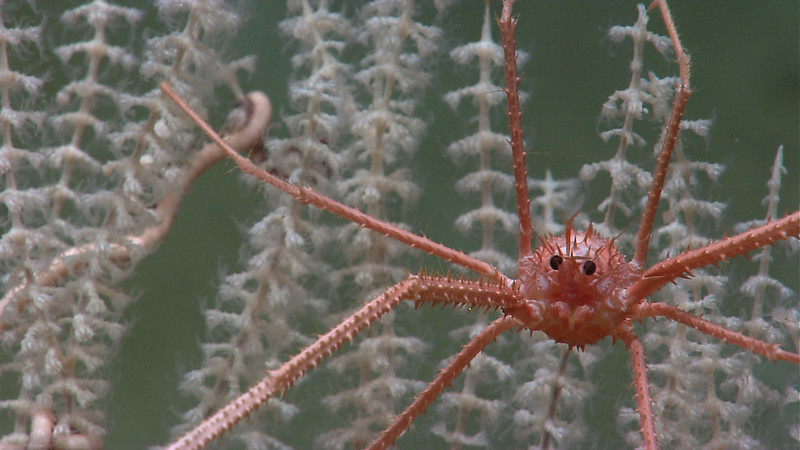
Distribution:
Common in oceans around the world,
except the coldest Arctic and
Antarctic waters
Ecosystem:
Coral reefs at all depths, continental
margins, shelf environments,
hydrothermal vents
Feeding Habits:
Opportunistic Feeder
Taxonomy:
Family Galatheoidea and Chirostyloidea;
Class Malacostraca
Overview and Physical Characteristics
Squat lobsters have small, flat bodies, ranging from 0.7 to 3.5 inches (1.778 to 88.9 mm) in length. These decapods (ten-footed) have a front pair of legs that are much longer than their bodies that end in a pair of large claws.
The lobsters earned their name by tucking their tails under their thorax, giving their bodies a shorter, more “squat” appearance.
But even though squat lobsters look like a lobster, DNA reveals they are actually more closely related to hermit crabs.
Habitat and Distribution
There are well over 900 species of squat lobsters, and they can be found in nearly every marine environment across most latitudes around the world. Some prefer soft sandy sediment, others live on deep sea corals, while other live in the nooks and crannies of ledges. Wherever they are found, these crustaceans tend to swarm in large numbers, aggregating in areas where food is abundant.
A squat lobster’s diet varies depending on location. Some squat lobsters are filter feeders, straining plankton from seawater, some scavenge dead material or particles of algae that fall to the ocean floor, while others consume plants and zooplankton to survive. One species of squat lobster, Munidopsis andamanica, eats only wood from sources such as sunken trees or the timbers from shipwrecks, grinding the wood down with its teeth before swallowing.
Behavior and Reproduction
Most squat lobsters are scavengers, however, recent video footage captured by underwater submersible suggests that certain species are active predators. Their frequently observed “claws-extended” behavior has displayed some success in capturing live prey.
Little is known about squat lobster reproduction. Scientists assume that their reproductive cycle is like other crustaceans, where the male transfers sperm to the female, who holds the eggs until they hatch. Once the eggs hatch, the free-swimming larvae go through a number of developmental phases before metamorphosing into adults. While scientists don’t know the definitive squat lobster lifespan, some species are known to live between four and eight years.
Fun Fact
Oceans make up 70% of the earth’s surface, but only about 5% have been fully explored.
In a recent deep-sea expedition in an unexplored part of the Pacific Ocean, an unmanned submersible descended to depths of 4,500 m (14,763 ft) to collect environmental data on a series of seamounts off the coast of Chile. Squat lobsters were among the species of coral, sponges, and sea urchins found in the mix.
It seems nearly everywhere scientists look in the unexplored deep-sea environment, a species of squat lobster in the vicinity.
For More Information
- News of the Day: Crab Eats Trees from the National Oceanic and Atmospheric Administration (NOAA)
- Plunge Into the Deep-Sea World of Squat Lobsters from NOAA Fisheries
- Squat Lobster from the Aquarium of the Pacific
- Discovery of 5 New Deep-Sea Squat Lobster Species Calls for Revision of Current Classification from Harvard University
This story is part of the “Unleashing the Science” series, showcasing how bureaus within the Department of the Interior produce and apply science to ensure responsible management decisions for our planet now and for the future.
--BOEM--
The Department of the Interior’s Bureau of Ocean Energy Management (BOEM) manages development of U.S. Outer Continental Shelf (OCS) energy, mineral, and geological resources in an environmentally and economically responsible way.

